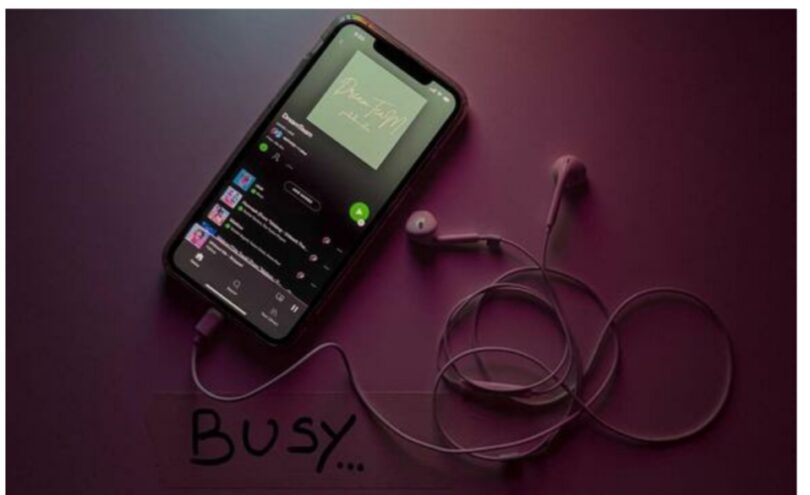Spotify has become one of the top music streaming platforms, with over 456 million monthly active users as of 2022. For artists, especially independent ones, having your music available on Spotify allows you to tap into their vast audience and grow your fanbase. In this article, we’ll walk through the key steps indie artists need to take to get their music on Spotify and set up their artist profile.
Set Up Your Artist Profile
The first thing you’ll want to do is create your Spotify for Artists profile or your Apple Music profile. This is where you can manage your uploads, track analytics, pitch to playlists, organize your song and album listings, and more.
To create your artist profile:
1. Go to the Spotify for Artists landing page and click «Get Started»
2. Login using your personal Spotify account credentials
3. Verify your identity by checking your email or mobile number
4. Fill out your artist details like your artist name, playlist handle, website URL, contact email, and more
5. Upload an artist profile picture and cover image that meets Spotify’s requirements
6. Click “Save Profile” to complete your setup
The more complete you can make your profile, the better since this serves as your central hub on Spotify as an artist. Make sure your bio is descriptive, your images are high-quality, and all social links are included.
Understand Spotify’s Upload and Release Process
Once your artist profile is ready to go, you can move onto the uploading and release process. Here are some key things to understand:
• Spotify requires all music uploads to go through authorized distribution partners first before appearing in their system. Some popular ones are CD Baby, DistroKid, TuneCore or if you have a label, they likely have their in-house distribution channels.
• The distribution partner will encode your tracks to meet Spotify’s technical specifications, Deliver them to the Spotify catalog via automated feeds, and act as the middleman on collecting and paying out royalties.
• There is often an annual fee from distribution partners to list your music in online stores like Spotify. They also take a small commission on your streaming royalties.
• After your distribution partner sends your release to Spotify (which may take a few days to appear), you can then claim it under your Artist profile so you have full control and analytics access.
The key benefit of going through a distribution partner is that they simplify the complex process of getting music across all major streaming platforms. This allows you to focus just on the creative end.
Find out more about Spotify promotion works.
Spotify’s Upload and Release ProcessPhoto bySpotify
prep your Release
To prep your release:
• Have your tracks professionally mastered so the audio quality shines through. This is especially important for Spotify since listeners tend to focus on new releases.
• Determine the exact release date and add it to your distribution partner listings for things like pre-save functionality. Most aim for Fridays when new music discovery is highest.
• Upload your cover artwork, which should be a high-quality, 3000×3000 square image. Make sure there aren’t any blurry elements or lettering.
• Provide all the relevant release info – official song names, the album name, your artist name as listed on your Spotify profile, genre tags like «indie pop» or «alternative rock», copyright and publisher details, and an ISRC code for each track
• For an album, determine your track sequence order carefully for the best listening flow from start to finish.
Following best practices for tagging and metadata ensures that your release gets indexed properly within the Spotify system so fans can discover it with relevant searches. Check out the best music promotion services out there.
Upload and Monetize Your tracks
Once your distribution partner has delivered your tracks onto Spotify under a release, you can head to your Spotify for Artists profile to officially claim them.
Here are the specifics on uploading tracks:
• In your Spotify for Artists profile, head to the “My Catalog” section. Here you’ll see your artist releases delivered by your distribution partner.
• Click the three dots beside any release and choose «Claim Release Profile» to add it to your official catalog.
• After claiming, you can access valuable streaming statistics on those releases like monthly listeners, top tracks, and popular listening regions.
• Under the Analytics tab, you can also filter analytics by date ranges or dive deeper into demographic data on your audience. This helps guide your marketing tactics.
When fans stream your music, Spotify pays out royalties based on their pro-rata share of total streams. This is then passed on by your distribution partner after their commissions.
While streaming royalties are small, pennies per play, they can add up over time as your fanbase grows. Ensuring your profile is ready for uploads is the vital first step in this potential revenue stream.
Upload and Monetize Your tracksPhoto byMonetize Your tracks
Best Practices for Ongoing Growth
As an independent musician in charge of your own career path, you’ll need to actively pitch your music to stand out on Spotify amidst over 80 million tracks. Here are some top growth strategies:
• Land on Spotify editorial playlists like Fresh Finds or Radar to access new audiences. Pitches happen through your Spotify for Artists profile.
• Run targeted Spotify ads using One Submit or similar platforms. You can target fans of specific genres or similar artists.
• Engage your existing fans across social media, email lists, and messaging apps. Let them know when you have new music dropping and urge them to stream, share and save songs.
• Analyze your Spotify streaming analytics to uncover listener trends. Find out where they live, their age groups, listening times, favorite tracks, and related artists. Use this intel to shape marketing.
• Record Spotify-friendly alternate versions of songs like acoustic renditions or instrumental beats to give fans fresh takes. This boosts your streamable catalog.
The key is combining your distribution partner’s technical capabilities with your own hustle as an artist. This musical partnership is what unlocks Spotify’s potential for independent artists. Leverage all tools available to capture fans on the world’s top audio streaming platform. Read more about how much does Spotify pay per stream in 2024.
 Agencia
Agencia Publicar
Publicar Publicidad
Publicidad Contacto
Contacto








